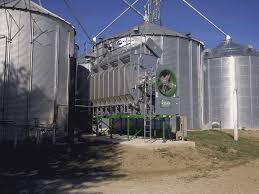Source: cropwatch.unl.edu
 Farming operations are detailed, complex, and often only known by one person. In the event a key farm operator is unable to operate the farm, Nebraska Extension has developed a Crop Operations Plan to help guide someone new to the operation to adequately and successfully operate the farm for the next couple months. This guide is not designed to be a legal document, but it provides some guidance to an employee or neighbor who may not know all of the innerworkings of the farming operation.
Farming operations are detailed, complex, and often only known by one person. In the event a key farm operator is unable to operate the farm, Nebraska Extension has developed a Crop Operations Plan to help guide someone new to the operation to adequately and successfully operate the farm for the next couple months. This guide is not designed to be a legal document, but it provides some guidance to an employee or neighbor who may not know all of the innerworkings of the farming operation.
The Crop Operations Plan includes key contacts for farming inputs or needs; a field plan for each crop field in production, including seed selection, fertilizer needs, and crop protection plan; and space for day-to-day activities, access to data management software, location of farm supplies, etc. It is important to initially identify two or three potential replacements who may have the knowledge or skills to operate the farm.
It is recommended farm operators complete this plan as soon as possible since no one knows if, or when, they may become ill or unable to perform farming operations. This guide is primarily for use over the next couple months, but it can be modified to include operations beyond that time frame. It can also be incorporated permanently into business plans. Nebraska Extension will also provide an extended operations plan in the near future.
A Cow-Calf Operations Plan has also been developed for operations that include cows and calves.
The Crops Operations Plan and Cow-Calf Operations Plan are available in a Word document and can be downloaded by clicking the links above.
 28 April 2020: Good morning to you all! We are waking on this fine Tuesday morning to a few scattered showers in some places across our region. Expect this to continue today, not going to rain everywhere all day, and some peeks of sunshine are likely as a warm front lifts north. This should allow temperatures to warm into the upper 60s to low 70s with breezy conditions. Scattered showers return by morning with lows tonight in the low to mid 50s. Scattered showers and possibly a storm tomorrow with highs in the low to mid 60s.
28 April 2020: Good morning to you all! We are waking on this fine Tuesday morning to a few scattered showers in some places across our region. Expect this to continue today, not going to rain everywhere all day, and some peeks of sunshine are likely as a warm front lifts north. This should allow temperatures to warm into the upper 60s to low 70s with breezy conditions. Scattered showers return by morning with lows tonight in the low to mid 50s. Scattered showers and possibly a storm tomorrow with highs in the low to mid 60s.




 Without that snow barrier, species such as alfalfa and timothy — the most susceptible of our non-native forages — are subject to winter injury, which thins stands. This leaves less competition for weeds to establish and flourish.
Without that snow barrier, species such as alfalfa and timothy — the most susceptible of our non-native forages — are subject to winter injury, which thins stands. This leaves less competition for weeds to establish and flourish.

